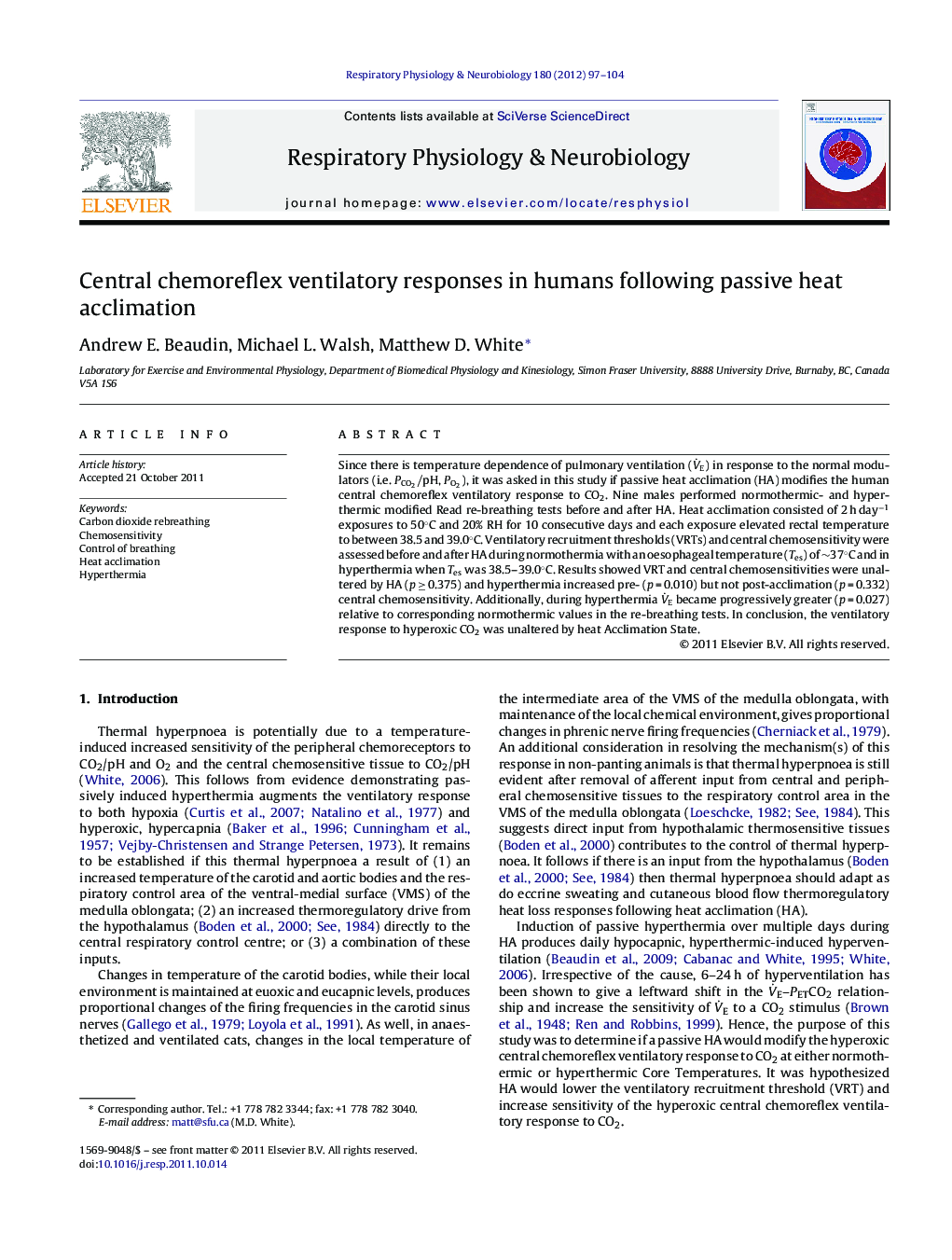| Article ID | Journal | Published Year | Pages | File Type |
|---|---|---|---|---|
| 2847402 | Respiratory Physiology & Neurobiology | 2012 | 8 Pages |
Since there is temperature dependence of pulmonary ventilation (V˙E) in response to the normal modulators (i.e. PCO2/pHPCO2/pH, PO2PO2), it was asked in this study if passive heat acclimation (HA) modifies the human central chemoreflex ventilatory response to CO2. Nine males performed normothermic- and hyperthermic modified Read re-breathing tests before and after HA. Heat acclimation consisted of 2 h day−1 exposures to 50 °C and 20% RH for 10 consecutive days and each exposure elevated rectal temperature to between 38.5 and 39.0 °C. Ventilatory recruitment thresholds (VRTs) and central chemosensitivity were assessed before and after HA during normothermia with an oesophageal temperature (Tes) of ∼37 °C and in hyperthermia when Tes was 38.5–39.0 °C. Results showed VRT and central chemosensitivities were unaltered by HA (p ≥ 0.375) and hyperthermia increased pre- (p = 0.010) but not post-acclimation (p = 0.332) central chemosensitivity. Additionally, during hyperthermia V˙E became progressively greater (p = 0.027) relative to corresponding normothermic values in the re-breathing tests. In conclusion, the ventilatory response to hyperoxic CO2 was unaltered by heat Acclimation State.
► Heat acclimation. ► Hyperoxic CO2 rebreathing. ► Pulmonary ventilation. ► Passive hyperthermia.
